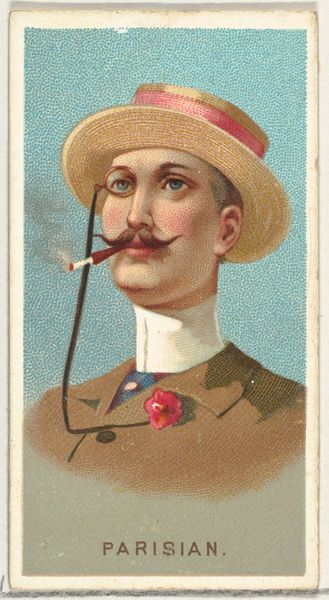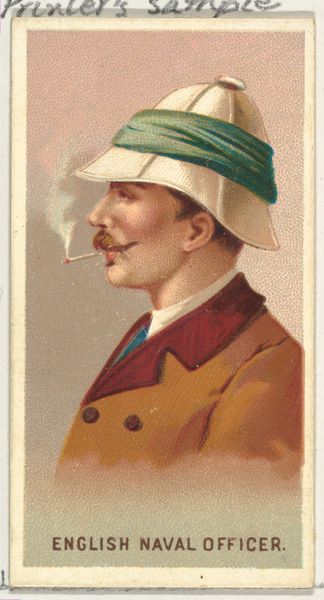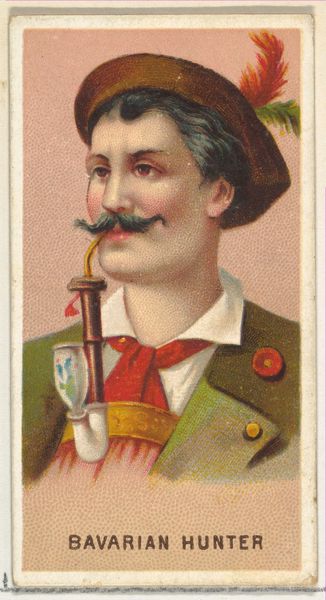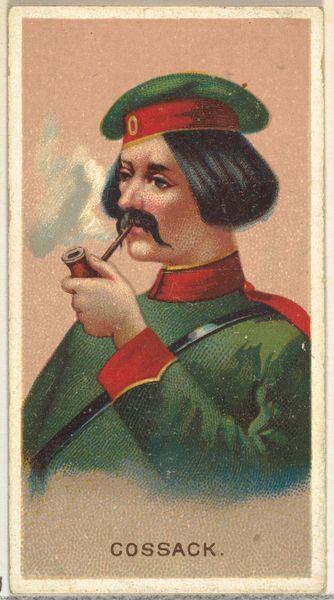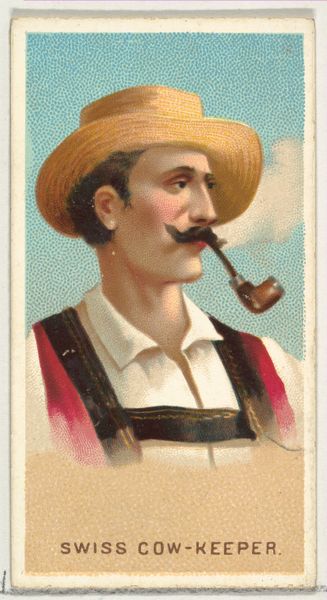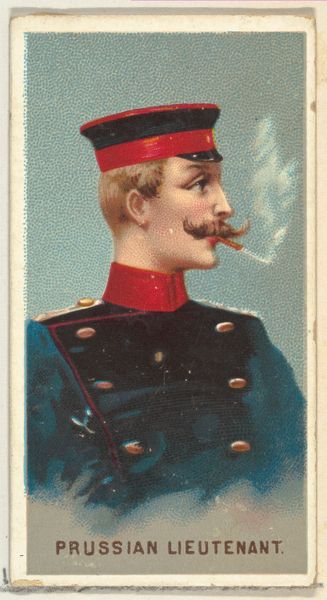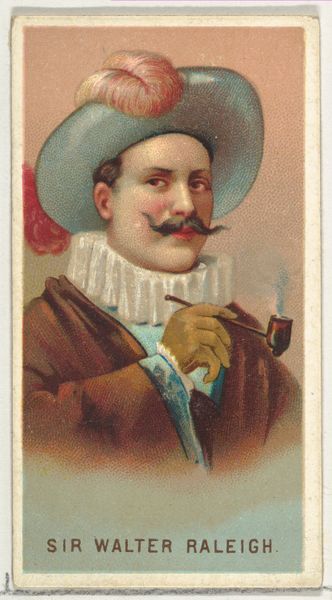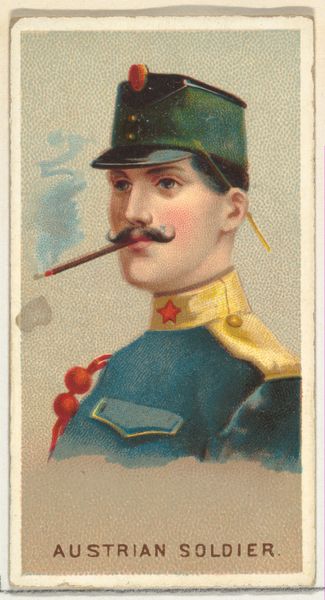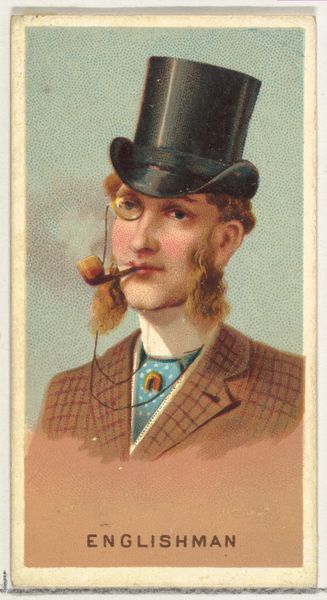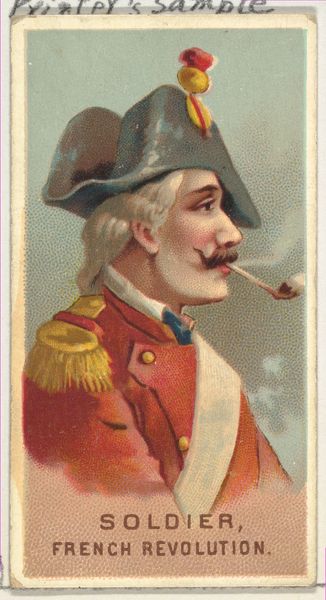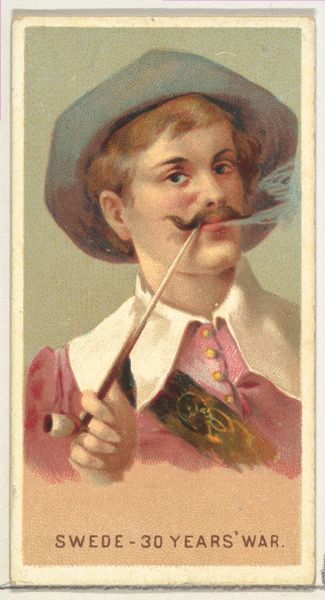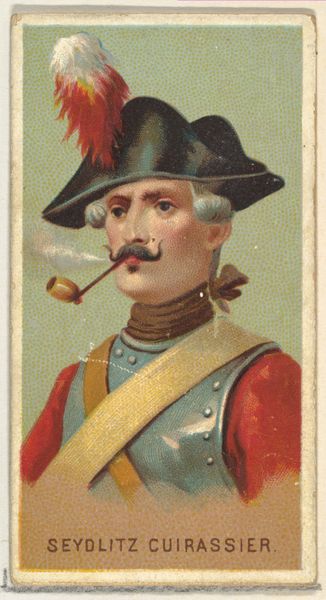
Tyrolese, from World's Smokers series (N33) for Allen & Ginter Cigarettes 1888
0:00
0:00
#
portrait
# print
#
caricature
Dimensions: Sheet: 2 3/4 x 1 1/2 in. (7 x 3.8 cm)
Copyright: Public Domain
Curator: Hmm, this portrait feels distinctly staged, wouldn't you say? Editor: Indeed. This is "Tyrolese," from the "World's Smokers" series, issued around 1888 by Allen & Ginter as part of their cigarette cards. Prints like this were collected and traded at the time. It’s now housed at The Met. Curator: World’s Smokers... It is amazing how images associated with trade cards became vehicles of cultural understanding, however superficial it might be. Look at the way this Tyrolese man, with his pipe and feathered hat, is clearly meant to signify a certain kind of jovial, rustic masculinity. Editor: The very definition of idealized and marketable identity. It speaks volumes about how ethnicity and class were packaged and consumed during that era. This isn't just a portrait, it's a carefully constructed representation designed for mass consumption. How might it impact cultural understanding? Curator: The smoking apparatus carries a unique weight here, literally exhaling character. Consider the symbols— the pipe's bowl, the ascending smoke; it's a carefully arranged choreography, a symbol of belonging, cultural pride perhaps, but even a promise of status for a new smoker. Editor: Yes, it normalizes and glamorizes a habit, right? And reinforces potentially harmful gender roles as this man is a smoker. These images create cultural associations we must actively decode. What symbols are highlighted or erased in relation to the cultural narratives? Who gets a voice here, and how is their story simplified? Curator: Perhaps simplified, but also codified. Look how the portrait uses the visual language available to create a recognizable ‘type’. The hat, the pipe, the mustache... these aren't merely details; they are performative elements, intended to be understood, read, and integrated into a larger cultural script. It’s an emblem. Editor: Exactly! A symbol with encoded implications and power. When we gaze at art such as this, we should also investigate power dynamics. Curator: Perhaps understanding is to acknowledge that it served purposes beyond representation: these emblems shaped cultural memory and solidified shared visual experiences in that era, leaving legacies that can still be seen today. Editor: Food for thought; I think it underlines how crucial it is to continually analyze what stories we see, how and who has represented.
Comments
No comments
Be the first to comment and join the conversation on the ultimate creative platform.
